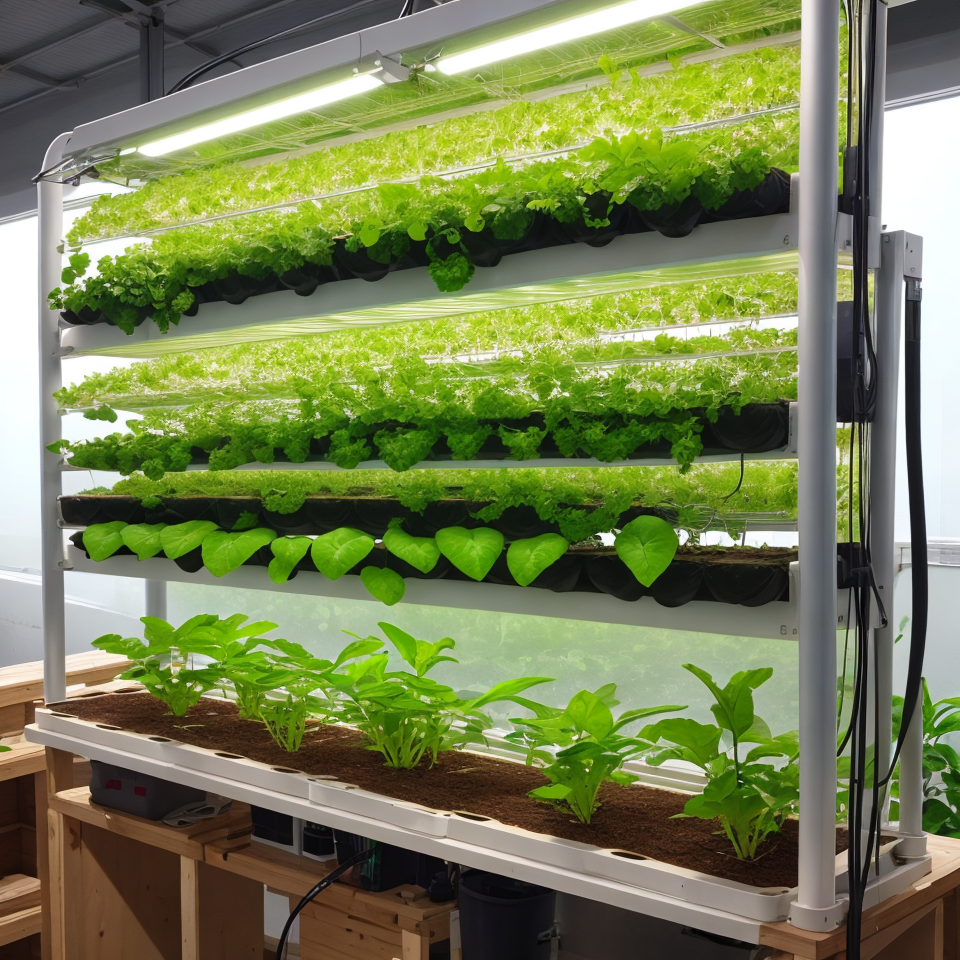Hydroponic Gardening – Exploring the Basics
In a world where innovative approaches to cultivation are gaining prominence, hydroponic gardening emerges as a beacon of modern agricultural practices. This method, founded on principles that eschew traditional soil in favor of nutrient-rich water solutions, has garnered widespread attention due to its efficiency and productivity.

continues to captivate both novice gardeners and seasoned horticulturists, let’s embark on a journey to delve into its fundamental concepts and practices.
Historical Evolution
The roots of hydroponics extend deep into history, encompassing the ingenuity of ancient civilizations such as the Babylonians and the Aztecs. These ingenious cultures recognized the potential of cultivating plants without relying on soil, using innovative techniques like the Hanging Gardens of Babylon and the floating gardens of Tenochtitlan. Fast-forward to the present and hydroponics has transformed from experimental marvels to a cutting-edge approach embraced by researchers and farmers alike.

Core Principles of Hydroponics
Central to hydroponic gardening is the radical departure from conventional soil-based cultivation. Instead, hydroponics revolves around a core trinity of principles: water, nutrients, and support. Plants are nurtured in nutrient-rich water solutions, enabling them to allocate more energy towards growth and yield. The absence of soil eliminates the risk of soil-borne diseases, granting a healthy start to every plant. Inert mediums such as coconut coir, perlite, and vermiculite provide the necessary support for plants’ root systems.
Advantages of Hydroponic Gardening
Hydroponics isn’t merely a deviation from tradition; it’s a gateway to a realm of advantages that extend far beyond the ordinary. The controlled environment of hydroponic systems facilitates faster growth rates, resulting in expedited harvests and an uninterrupted supply of fresh produce. Water and resource efficiency are inherent traits, with water consumption reduced by up to 90% compared to traditional soil farming. Moreover, the elimination of soil negates the possibility of soil-borne pests and diseases, assuring a safer and more predictable harvest.
Types of Hydroponic Systems
Hydroponic systems come in an array of variations, each with its unique mechanisms and benefits. Deep Water Culture (DWC) immerses plant roots in nutrient-rich water, fostering impressive growth rates. The Nutrient Film Technique (NFT) employs a thin film of nutrient solution that flows across roots, ensuring efficient nutrient uptake. Drip Irrigation Systems deliver nutrients through water-dripping mechanisms, while aeroponics mists roots with nutrients, promoting rapid growth in a highly oxygenated environment.

Nutrient Management
The heart of hydroponic success lies in meticulously balanced nutrient solutions. Nutrient solutions tailored to specific plant requirements provide a symphony of essential elements like nitrogen, phosphorous, and potassium. Continuous monitoring of pH and electrical conductivity (EC) levels is imperative, ensuring optimal nutrient absorption and root health. By mastering the art of nutrient management, hydroponic gardeners unlock the potential for thriving, vibrant crops.
Selecting Suitable Crops
One of the hydroponics’ most intriguing aspects is its adaptability to a diverse range of crops. From leafy greens to succulent fruits, hydroponic gardening accommodates an eclectic selection. Tailoring hydroponic systems to different crops’ needs fosters exceptional growth and flavor. Gardeners can relish home-grown strawberries, tomatoes, and herbs, enjoying flavors and yields that rival traditional soil cultivation.
Environmental Factors
Hydroponic gardening entails a keen understanding of environmental factors that impact plant health and growth. Temperature and humidity control play pivotal roles in creating a stable microclimate for plants to thrive. Adequate light is essential, with options ranging from natural sunlight to LED and HID grow lights, ensuring optimal photosynthesis. Oxygenation is also key, as roots require ample oxygen for nutrient absorption and growth.

Hygiene and Disease Managemen
In the pursuit of pristine growth, hygiene reigns supreme. Maintaining a sterile environment curbs the proliferation of pathogens, safeguarding plants from diseases. Beneficial microorganisms, often introduced through nutrient solutions, establish a delicate balance that enhances root health and nutrient absorption. By adhering to rigorous hygiene practices, hydroponic gardeners nurture an environment where plants flourish.
Getting Started with Hydroponics
Embarking on a hydroponic gardening journey need not be daunting. Setting up a basic hydroponic system involves assembling essential components, selecting an appropriate growing medium, and setting up a nutrient reservoir. Novices can follow a step-by-step guide to ensure a smooth start, from germinating seeds to transplanting seedlings. Overcoming common challenges, such as nutrient imbalances and pH fluctuations, becomes more manageable with knowledge and practice.
hydroponic gardening is a captivating fusion of science and art, a blend of innovation and tradition. As we traverse the evolution of this revolutionary approach, from its historical roots to the intricacies of nutrient management, the doors of exploration swing wide open. By embracing the principles and techniques that underlie hydroponics, gardeners of all levels can cultivate a thriving and bountiful harvest, rewriting the narrative of modern agriculture.
